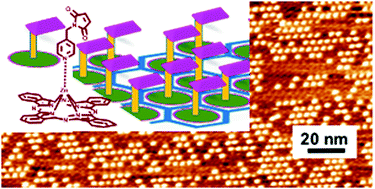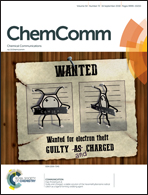Probing the in-air growth of large area of 3D functional structures into a 2D supramolecular nanoporous network†
Abstract
Surface-confined host–guest chemistry at the air/solid interface is used for trapping a functionalized 3D Zn–phthalocyanine complex into a 2D porous supramolecular template allowing the large area functionalization of an sp2-hybridized carbon-based substrate as evidenced by STM, resonance Raman spectroscopy, and water contact angle measurements.

- This article is part of the themed collection: Scanning probe frontiers in molecular 2D-architecture world


 Please wait while we load your content...
Please wait while we load your content...